There are tons of frameworks to build internal tools and admin panels for your running web app. Instead of assigning a team to create simple admin panels, you should rely on the following frameworks.
Most mid-size web apps need some way to manage and monitor the flow of data. That’s why we need to build and maintain internal tools to moderate what’s going on in our site.
But what if I tell you that you don’t need to create these tools by yourself?
With the low-code and no-code movements going on, it’s way easier to build interactive web apps in less time. If you’re a developer, you shouldn’t worry about this type of platform since most companies rely on web frameworks like Django or Ruby on Rails.
However, it’s important to know these low-code platforms because they can save you a ton of time creating a simple internal tool or admin panel that connects to a database.
You can focus on the core features of your product and designate simple tasks to these ready-made solutions.
What do these Frameworks provide to us?
The main approach we can get from this kind of framework is time-saving.
These frameworks allow us to connect to our databases, create simple CRUD (create, read, update and delete) operations, and group all this functionality in a simple to use UI. That’s why most of these frameworks provide drag and drop components.
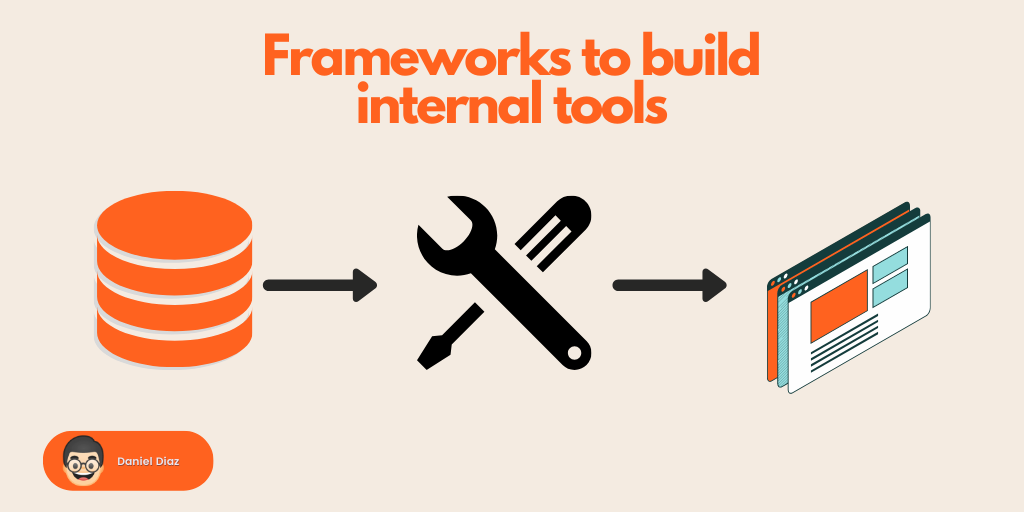
You don’t need to hire a dedicated UI team to build a pretty interface, but use a predefined one and speed up all the processes.
This is exactly what these frameworks offer; however you can’t rely on them for:
- Creating core functionality of the app
- Building back-end features
- Flexibility and Customization
To sum up, the following frameworks give you a predefined UI that can connect to your backend and create simple management tools for your team but aren’t a replacement to solid web frameworks.
Let’s see the most prominent ones!
Appsmith
Appsmith is an open-source framework that lets you build admin panels, simple CRUD apps, and workflows in no time.
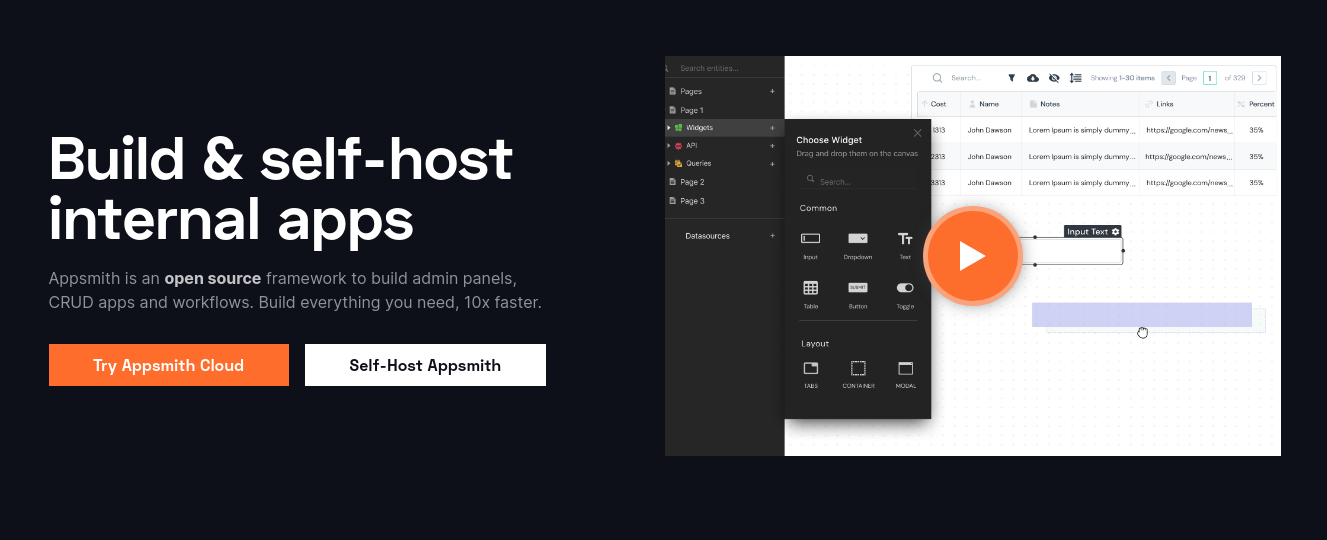
The neat thing about appsmith is that it’s an open-source project, and you can access the framework source code on GitHub.
That also means it’s a free-to-use framework; you can self-host your apps with Docker and use their cloud service, which is free to the public — at writing time.
Features
- Easy deploy
- Self-hosted options
- Free cloud-hosted server
- Drag and drop components
- Multiple widgets to choose from
- Wide variety of templates
- Database integrations for: DynamoDB, MongoDB, PostgreSQL, and more
- Great community and documentation
Internal
Internal is a no-code app builder that lets us create powerful internal tools in a short amount of time.
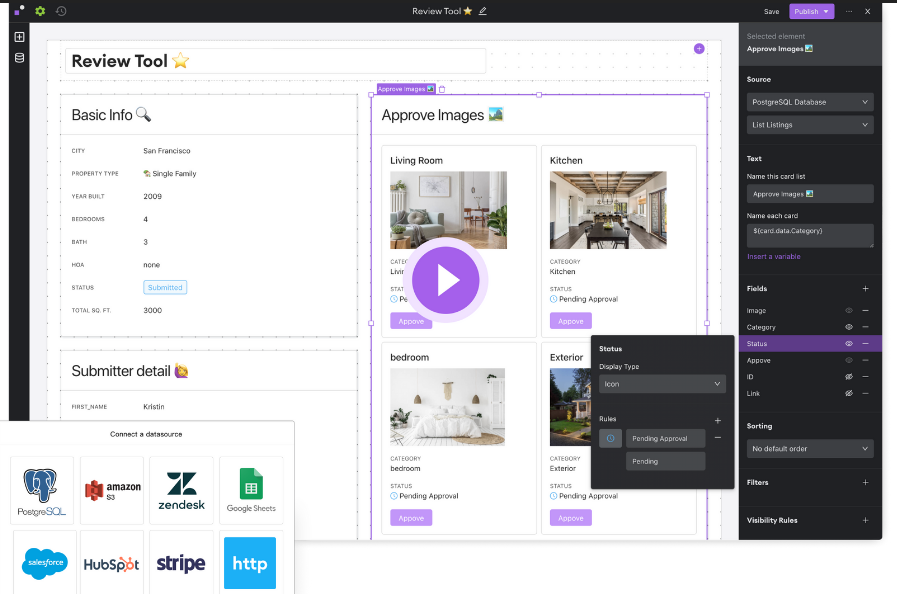
It’s a phenomenal framework because it gives us the option to not only connect to a database but integrate with spreadsheets, APIs, and other apps like Hubspot, Stripe, or salesforce.
This app builder has one of the most dedicated documentation sections out there that guide from the basics of this framework to building more ambitious apps.
You can access a generous starter pack, which results in more than enough if you want to quickstart the production of any internal tool.
Features
- Multiple data sources to connect with
- Granular permission system
- Easy to use interface
- Constant new releases
ToolJet
ToolJet is an open-source and low-code framework that lets us build internal tools with no technical knowledge needed.
This framework provides us a UI builder, which includes drag and drops tools, default widgets, and mobile layouts.
ToolJet can connect to multiple data sources like google sheets, PostgreSQL, Redis, Elastic search, and even external apps, like Stripe. Also, it counts with a built-in query editor, supported by most databases.
Although it’s a low-code tool, you can write custom JS code inside of the editor, in case you want to implement a custom feature by yourself.
As it’s an open-source project, you can contribute to ToolJet’s source code directly on GitHub.
Features
- Multiple data source options
- Built-in version control
- Easy to set up roles and permissions
- You can host it on any VPC (virtual private cloud)
- Free ToolJet cloud for up to 2 apps
Retool
Want to build powerful and well-designed interfaces without the complexity of UI libraries?
Retool has your back covered!
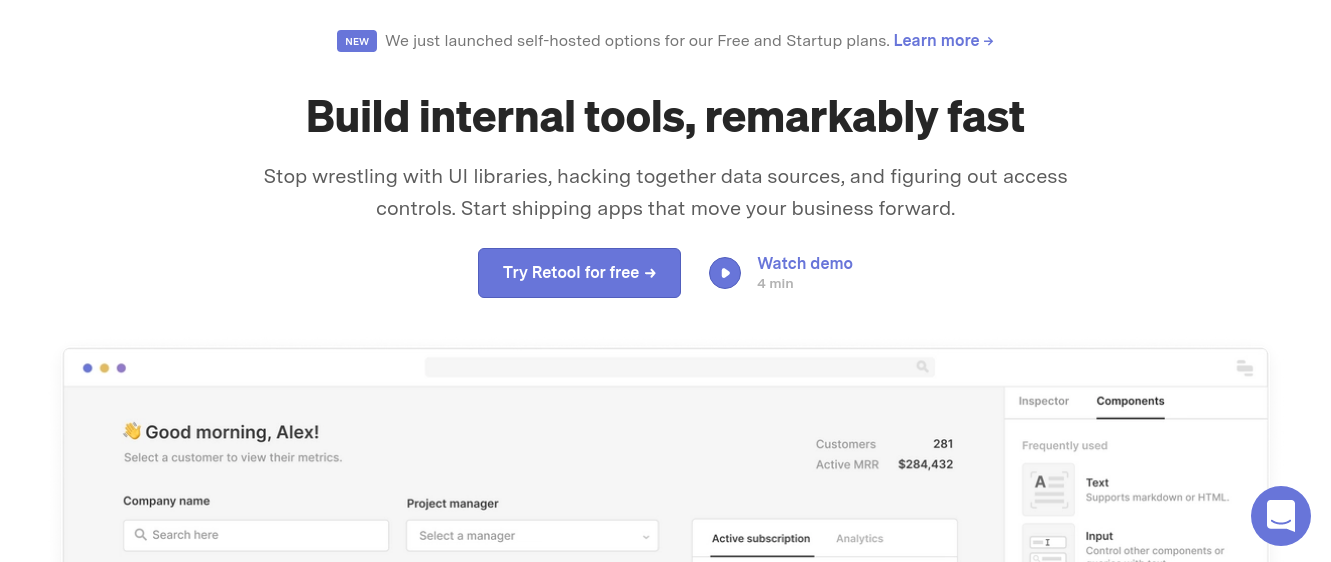
With Retool, you can connect with almost any data source, from a NoSQL database to any app with a REST, GraphQL, or gRPC API.
In fact, you can build an internal tool within the span of 4 minutes:
With a wide variety of pre-built components, such as tables, charts, lists, maps, wizards, forms, you can build, design, and host your internal tools in a low amount of time.
As with most of these frameworks, you control your data, and Retool is not the exception. This framework only connects to your database or API and makes queries to manage and create basic (and not that basic) CRUD operations.
Features
- More than 58 components
- Connect to almost any database or API
- Create custom database queries
- Extensive documentation
- Cloud and self-cloud planes
NocoDB
It’s amazing how this open-source project arose as an alternative to airtable. NocoDB is a no-code platform that lets you turn any database into a spreadsheet.
More than 1 billion people use spreadsheets to collaborate on projects every single day. However, it’s not as fast or reliable as a database, and NocoDB tries to fulfill that gap.
NocoDB is business-oriented but free-to-use since it’s an open-source project. It doesn’t offer any cloud hosting option at writing time, so you’ll need to self-host the apps you build with it.
Also, you can integrate and automate processes with many apps, like Discord, Slack, Whatsapp, Email, and more.
Features
- Open-source and free-to-use framework
- Turns any relational database into a spreadsheet
- Big community
- Made with business solutions in mind
- Create multiple views on top of your data
JetAdmin
Jet admin is yet another internal tool builder, which lets you create business apps in minutes.
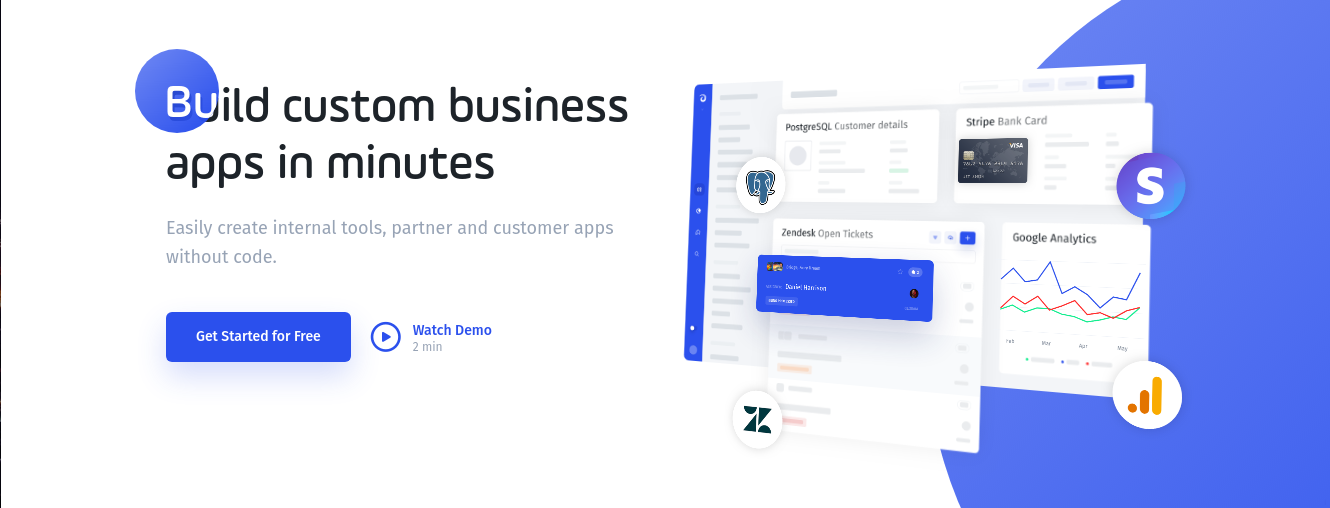
You don’t need coding experience to get started with using Jet admin. The only thing you need is a data source to work it, and you can start drag and dropping components to build
On the other hand, if you’re a developer, you can take advantage of the various developer tools available on the Jet admin platform. You can build custom components with HTML, CSS, Javascript, or React, create custom SQL or HTTP queries, and parse responses with formulas and Javascript.
Features
- Customer portal building
- Developer tools
- Connect to DB and APIs
- 50 UI components
Budibase
Want to build an internal tool rapidly with an open-source and low-code platform? Budibase stands out for its quickness and reliable features that combine all of what you need to build internal tools.
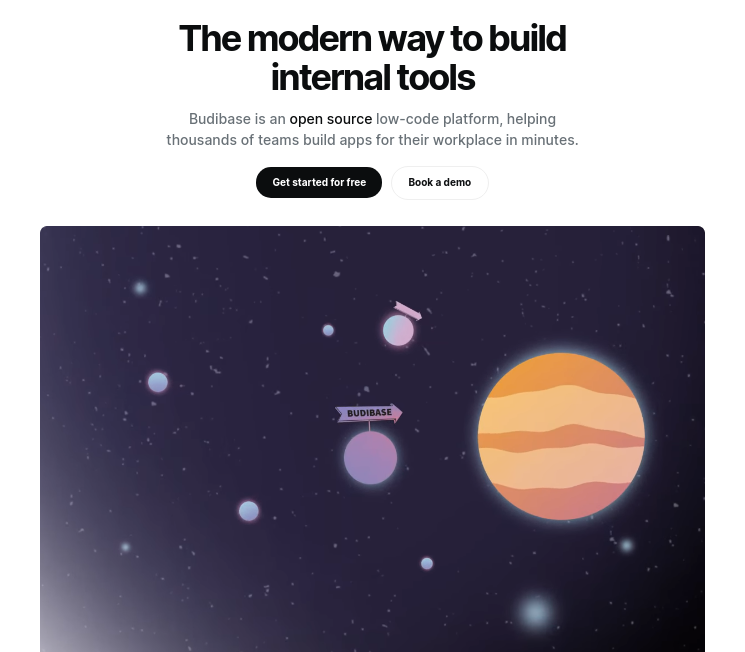
With Budibase, any non-coder person can produce a full-featured internal tool due to its easy-to-use interface and several available integrations. These integrations include Airtable, Docker, Discord, Sendgrid, CSVs, S3, and more.
For now, the only way to deploy apps made with Budibase is by using your own infrastructure; however, DigitalOcean has a dedicated droplet.
Features
- Build Single Page Applications (SPA)
- Pre-made components
- Automation of process
- Free and open-source
- Load data from multiple sources
DronaHQ
DronaHQ lets you create beautiful and responsive internal tools on top of an existing application.
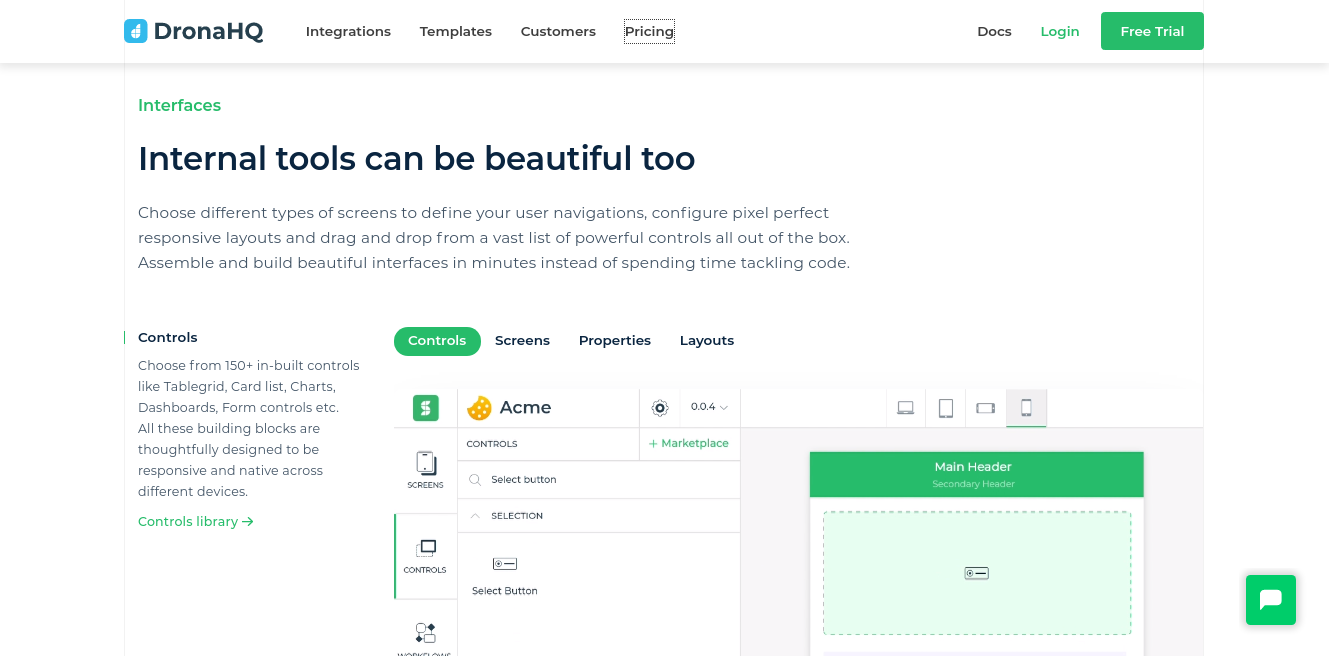
This framework gives you everything you need to create an internal tool, like data source connections, templates, and a reliable cloud platform. Essentially, DronaHQ guides you from building, designing, deploying, and hosting your apps.
It also lets you manage your data as a spreadsheet, just as NocoDB does.
One neat thing is the vast number of integrations you can make with your DronaHQ, like Slack, Zapier, Trello, Twillio, Sendgrid, Salesforce, and much more.
Start your 14-day trial today!
Features
- Scheduled automation flows
- Good looking app creation
- PDF creator
- Several integrations
- UI app builder
- Extensive documentation
Conclusion
Low-code and no-code platforms are out there, explore them and embrace them. They aren’t meant to replace web developers or designers but to save time building simple apps and focusing on the core features of your business.
We presented free and paid options; now, it’s up to you to decide the correct one for your purposes. If you go for a self-hosted solution, check out these cloud hosting platforms to get the VM.



